Listen to the Podcast
27 September 2024 - Podcast #901 - (18:41)
It's Like NPR on the Web
If you find the information TechByter Worldwide provides useful or interesting, please consider a contribution.

If you find the information TechByter Worldwide provides useful or interesting, please consider a contribution.
All of Us is a project of the National Institutes of Health and, depending on your view of bureaucratic federal health agencies you’ll be somewhere on the spectrum of wanting to sign up immediately, learn more, or avoid it (pardon the dumb joke) like the plague.
I said “bureaucratic” knowing that some people will view that word as an epithet, so let me explain that’s not my intent. A “bureaucracy” is simply a body of non-elected government officials or an administrative policymaking group that is intended to ensure certain guidelines are followed.
The National Institutes of Health (NIH) is the primary biomedical and public health research agency in the United States. It dates back to the late 1880s. The NIH conducts its own scientific research and provides major biomedical research funding for other organizations. To learn more about the NIH, see Wikipedia.
Click any small image for a full-size view. To dismiss the larger image, press ESC or tap outside the image.
 All of Us has as its objective the development of a large and diverse health database that is being built from information shared by US citizens. “All of us”, as the name implies. This information can be used to find better ways to treat or prevent illnesses. More information gives scientists better insights into common and not-so-common illnesses.
All of Us has as its objective the development of a large and diverse health database that is being built from information shared by US citizens. “All of us”, as the name implies. This information can be used to find better ways to treat or prevent illnesses. More information gives scientists better insights into common and not-so-common illnesses.
If that’s enough to interest you in joining All of Us, great! You can sign up here. If you need more information, stick with me and I’ll explain why I signed up several years ago, what’s involved, and why you might want to be part of the group.
It starts with a clear description of what All of Us is all about: “Too often, health care is one-size-fits-all. But imagine a future where prevention, treatment, and care are tailored for YOU. That future starts with research that includes all of us.”
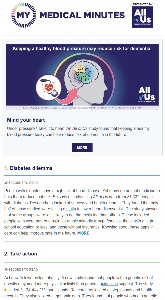 Nearly everyone living in the United States is eligible to join with the exception of people in prison, adults who are unable to consent on their own, and children. The project started in 2015 and aims to collect genetic and health data from one million volunteers. Information and materials are available in English and Spanish. Participants receive occasional newsletters and messages that describe a need for information about specific health conditions or that offer online exercises or tests that you may find interesting or helpful. In some cases, exercises are repeated occasionally so that you can observe your own performance changes over time.
Nearly everyone living in the United States is eligible to join with the exception of people in prison, adults who are unable to consent on their own, and children. The project started in 2015 and aims to collect genetic and health data from one million volunteers. Information and materials are available in English and Spanish. Participants receive occasional newsletters and messages that describe a need for information about specific health conditions or that offer online exercises or tests that you may find interesting or helpful. In some cases, exercises are repeated occasionally so that you can observe your own performance changes over time.
Research materials collected by All of Us have been used to address the Covid-19 pandemic. Electronic health records, when participants agree to share them with the project, can be used to detect patterns associated with covid and other infectious diseases.
Having a computer, tablet, or smart phone makes participation easier but there is no requirement. No health insurance is required and All of Us does not provide any kind of medical treatment.
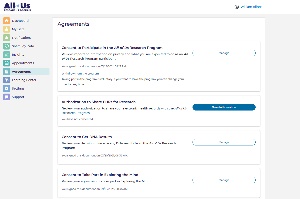 Recently All of Us has started requesting access to participants’ electronic health records (EHR). This is optional. All of Us asks participants to answer several health surveys. Answers provided are not associated with the participant’s identity and are used to build the database. Approved researchers can access this database to conduct their studies. There is one warning that the project makes abundantly clear: “The main risk of sharing to your EHRs is to your privacy. It is a low risk, but it is not zero.”
Recently All of Us has started requesting access to participants’ electronic health records (EHR). This is optional. All of Us asks participants to answer several health surveys. Answers provided are not associated with the participant’s identity and are used to build the database. Approved researchers can access this database to conduct their studies. There is one warning that the project makes abundantly clear: “The main risk of sharing to your EHRs is to your privacy. It is a low risk, but it is not zero.”
If this concerns you, and it should, see the explanation on the All of Us website. If you decide to share your EHR data, the site will walk you through the reasons your information will be beneficial to the program, what information is collected, what happens, and who will have access to it. Before you can give permission to share your electronic health records, you will also have to answer several questions correctly to confirm that you understand the explanation.
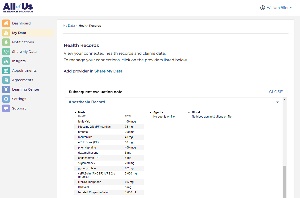 Part of my medical record from nearly two years ago shows the emergency surgical procedure on my spine. Participation in this part of the project won’t be for you if you’re concerned about allowing others to see your health information. Researchers, however, don’t see your name or other identification information, only your demographics and the condition.
Part of my medical record from nearly two years ago shows the emergency surgical procedure on my spine. Participation in this part of the project won’t be for you if you’re concerned about allowing others to see your health information. Researchers, however, don’t see your name or other identification information, only your demographics and the condition.
In some cases, All of Us asks participants for measurement of physical characteristics such as height and weight, blood pressure, and such. Blood and urine samples are sometimes requested. These are optional and there is no cost involved. The objective is to obtain information about a wide variety of people, including those who are often underrepresented in research.
So although it’s doubtful that any research using my data will be of any benefit to me, it’s possible that research based on my data will help others. If you’d like to sign up or just learn more, start on the All of Us website.
An email from Bitdefender warns about scammers who are posing as toll services via mobile messages. There are no toll roads where I live, but there’s the Ohio Turnpike in the northern part of the state. This is just another example of how clever scammers can be.
Here’s the example Bitdefender cited: “CA Toll Services has noted that your vehicle has an unpaid invoice. To avoid additional fees amounting to $59.89, please settle the outstanding balance of $5.79.” The message then provides a helpful link. If the recipient has a California EZPay ID, it would be easy to think that it’s only $6 and I’ll be charged ten times that if I don’t take care of it.
No, the scammers aren’t out to make a fortune on lot of $6 payments. Follow the link, fill in the information, and the scammers will at least have enough information to use your credit card fraudulently. And the site will probably tell the mark that they must prove their identity “for their own protection” and then the scammer will have enough information for identity theft.
This toll road scam won’t be effective in large areas of the United States where toll roads don’t exist. But there are lot of other scams that have broad appeal.
One common scam that fools far too many people involves thieves who impersonate government agencies, financial institutions, or businesses claiming that you need to make urgent payments with a gift card or you’ll face legal action. The caller may claim to be from the sheriff or a taxing agency. Maybe your tax payment is late or you will be arrestetd for missing jury duty unless you immediately pay a fine. That’s not the way it works. Nothing in the legal system is ever instant and no agency will ever demand to you pay with gift cards. But these creeps create a false sense of urgency, pressure you to buy expensive gift cards, and then give them the numbers on the back of the card.
So before acting, stop and think. Be a skeptic. Is the originating phone number in your area code? Is it even in the United States? Before clicking the URL, go to the toll collecting authority’s website. If you have a token, you’ll also have an account with the toll collecting organization. Sign in and see if you really have a balance due.
I recently saw a message that claimed in the subject line that there had been suspicious activity on a bank account. It cited a bank where I do have an account, but I didn’t even have to open the message to identify it as a scam because the “from” address indicated that it originated in India. The bank is not in India. It’s trivial to spoof the displayed address shown for the sender, but most scammers don’t even bother. When a message passes this test, you still need to be skeptical and there are many indicators to look for.
The sender’s email address may look similar to a legitimate address, but not exactly the one that belongs to the organization being impersonated. It’s even possible to register a domain that contains Greek or Russian characters that resemble Latin characters. These are impossible to detect visually and it’s why you should avoid clicking links in messages.
Click any small image for a full-size view. To dismiss the larger image, press ESC or tap outside the image.
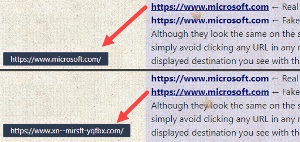 For example, can you tell the difference between these two URLs?
For example, can you tell the difference between these two URLs?
https://www.microsoft.com ← Real
https://www.miсrоsоft.com ← Fake
Although they look the same on the screen, the one on the bottom contains Russian characters С and О in place of Latin characters C and O. It’s best to simply avoid clicking any URL in any message, but start by hovering the mouse over the link if you must click it. If the text says “microsoft.com” but the displayed destination you see with the mouse hovering is “scammer.scambot.cn/fraud/ReallyLongName.exe” don’t click it. And no, there is no scammer who would make the fraud so obvious
Examine the message for how you are addressed. There’s probably not a financial institution anywhere that will refer to you as “Dear Customer” and most businesses do the same. They will address you by your name, not with a generic greeting or your email.
Consider any email that attempts to engender a sense of urgency or fear, urging you to act quickly, to be highly suspect. And it’s almost certainly a scam if they require you to “prove your authenticity” by providing an account number, password, or Social Security number.
One of the key giveaways is the presence of grammatical errors, awkward phrasing, and spelling mistakes. Scammers are getting better, but many do not speak corporate English. A real message from a real company will have been examined by lawyers, editors, and public relations professionals, so it won’t sound like something written by uncle Ed who flunked out of eighth grade.
Look for inconsistencies in logos, colors, or overall design that may not match the official branding of the organization. This is much less common than in the past. Design failures are marks of true amateur scammers.
Emails promising large sums of money, prizes, or gifts are usually fraudulent. A Nigerian prince doesn’t want to give you a million dollars. A dying widow won’t send you the money her corrupt husband embezzled. You haven’t won the Irish (or any other) lottery, especially if you didn’t buy a ticket for it.
When I picked up the remote control for my Bose TV Speaker to increase the volume, nothing happened. Maybe the battery needed to be replaced, so I flipped the remote over and noticed that the battery was missing.
Somehow the round battery cover had apparently rotated to the unlocked position. The battery and the battery cover were lying in the plastic tray where I keep remotes. I put the battery back in, placed the round cover, and rotated it to the lock position. The round cover and the battery promptly fell onto the desk.
Thinking that I had not locked the cover properly, I tried again. The result was the same.
Click any small image for a full-size view. To dismiss the larger image, press ESC or tap outside the image.
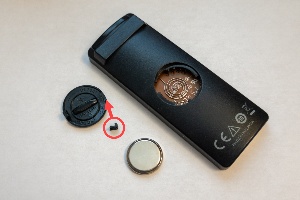 Then I noticed that one of the locking tabs from the round cover was missing. It was in the tray with the other remotes. The battery is one of those long-lasting round mercury batteries that I hadn’t had to replace in years, perhaps never, so I hadn’t broken the tab; it had just broken while lying in the tray with the other remotes.
Then I noticed that one of the locking tabs from the round cover was missing. It was in the tray with the other remotes. The battery is one of those long-lasting round mercury batteries that I hadn’t had to replace in years, perhaps never, so I hadn’t broken the tab; it had just broken while lying in the tray with the other remotes.
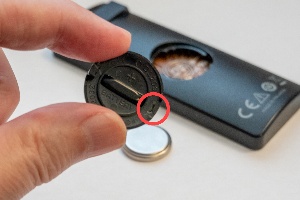 “Bose probably sells replacement battery covers for a dollar or two,” I thought. This is a 10¢ part, so it probably costs $5 and shipping will be another $5. Paying $10 for a 10¢ part will probably fix it. The Bose website offered options for setup & maintenance, troubleshooting, downloading a manual, or finding an accessory. No options for replacement parts.
“Bose probably sells replacement battery covers for a dollar or two,” I thought. This is a 10¢ part, so it probably costs $5 and shipping will be another $5. Paying $10 for a 10¢ part will probably fix it. The Bose website offered options for setup & maintenance, troubleshooting, downloading a manual, or finding an accessory. No options for replacement parts.
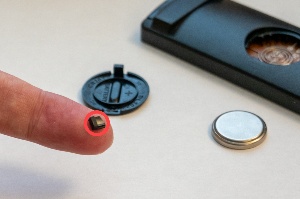 “Surely Bose will have an online support option where I can obtain the replacement part,” I thought. After opening a chat session, I found that I was talking with a chatbot that couldn’t deal with replacement parts, but it did connect me to a real person (Rachel) in less than 10 minutes. As chatbots go, that was good.
“Surely Bose will have an online support option where I can obtain the replacement part,” I thought. After opening a chat session, I found that I was talking with a chatbot that couldn’t deal with replacement parts, but it did connect me to a real person (Rachel) in less than 10 minutes. As chatbots go, that was good.
Fifteen minutes later, Rachel found that replacement battery covers were not stocked. After another 14 minutes, Rachel had spoken with her supervisor and found that Bose would send a replacement remote control.
That seemed like a good solution. Stupidly expensive for Bose, but it would work.
Except that it wouldn’t. Remotes weren’t in stock. They should be available in two weeks and Rachel would give me an incident number so that I could open another chat session in two weeks and order the part then. That’s right: There was no way for Rachel to enter the order so that the replacement would be shipped when the remotes were back in stock. It took another 10 minutes, and then Rachel was able to give me the incident number to use two weeks in the future.
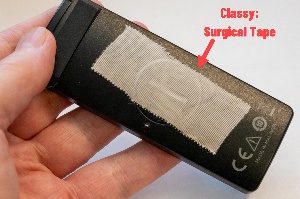 So 45 minutes yielded the promise of a possible solution.
So 45 minutes yielded the promise of a possible solution.
In the meantime, I have a workaround that involves a careful application of surgical tape.
When it was time to finish this report, the event had morphed into the never-ending story. Sixteen days later, Bose still didn’t have the remote in stock and I was instructed to try again in two weeks. At least this session with Bose support took only 20 minutes to produce no useful outcome.
One would expect a company to have a method in place to allow ordering an out-of-stock item that would then be shipped when it was once again available, but Bose hasn’t mastered that technology.
So the next time I need an audio device, I’ll probably select a manufacturer other than Bose.
TechByter Worldwide is no longer in production, but TechByter Notes is a series of brief, occasional, unscheduled, technology notes published via Substack. All TechByter Worldwide subscribers have been transferred to TechByter Notes. If you’re new here and you’d like to view the new service or subscribe to it, you can do that here: TechByter Notes.